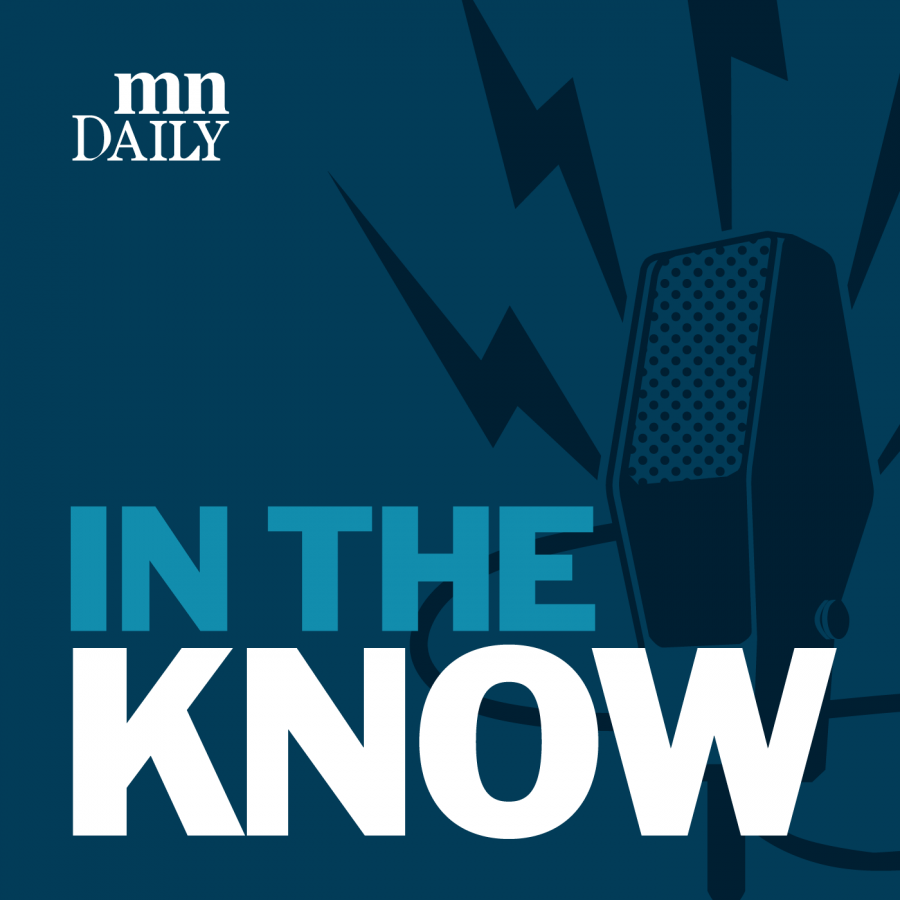KATE PETERSON: So the legend is that there are 225 carved owls all around Walter Library.
KAYLIE SIROVY: Welcome to In the Know, the podcast brought to you by the Minnesota Daily. I’m Kaylie Sirovy and that was Kate Peterson, an undergraduate services librarian.
PETERSON: Owls are a thing here, specifically because the architect or the architectural team was, we think, and maybe Rachel knows more about this, but we think, the idea of knowledge and owls was sort of connected and they really wanted this to be kind of classical.
SIROVY: Standing in the Upson room of Walter Library with its carved stone fireplace and beautiful oak features, I believe the architects really nailed that classical feel. It even withstood the test of time as Walter Library is now 100 years old! While some things have remained consistent, such as the presence of the owls, as Peterson mentioned, many aspects are different. When the library initially opened, it boasted roughly 500,000 books. Today, the number has surged to about eight million. Rachael Clark, a library assistant at the U, says more.
RACHAEL CLARK: Construction started in 1922. The cornerstone was laid in 1923. They moved in the summer of 1924, and the final dedication of the building was Halloween 1924.
SIROVY: Since the Minnesota Daily was launched at the end of the 19th century, you can find Daily articles on the libraries archive page about the dedication of Walter and how grand it was compared to other libraries at the time. One article from 1923 said and I quote, “the new library is the third most expensive state built institution in Minnesota.”
CLARK: So another thing to note, at the time this was built, this was just the library. There was no Walter in the name. It was just the library, or the new library, the main library.
SIROVY: The name “Walter” was not adopted until 1959 in honor of Frank Keller Walter, who helped in the planning and was the University of Minnesota’s Librarian from 1921 to 1943. It wasn’t the first library on campus, either. That title goes to a building called Old Main.
CLARK: It was just kind of tucked away in a corner and it was some encyclopedias and dictionaries and basic things like that. Universities like to all compete with each other to see who can have the most books, have the best study space. So that sort of pushed them into putting a library in Burton Hall. That space, we shared it with a bunch of other people, so that also still wasn’t ideal. So then they eventually got the funding to build a brand new, separate, purposely just for the library, building on campus that was all ours.
SIROVY: In the age of digital books, why are the physical spaces of libraries still important?
PETERSON: I think that libraries play a lot of different roles. Certainly when many incoming students or students think about the word library, they tend to think of our buildings and then they often think of books. So those are good, and we definitely provide a whole variety of study spaces for students because we know students like all sorts of different spaces. So we really work hard to have a lot of variety for students so that they can be really productive to get all the things that they need to get done.
SIROVY: Students have different preferences when it comes to their study environment. Walter Library has it all. While some prefer quiet spaces, others enjoy the ambiance of coffee shops like myself. There are also those who find solace in individual study rooms. Some people even opt for unconventional settings like the Toaster, which offers a distinct and unique atmosphere for their study sessions. Another library assistant, Lacie McMillin, shares her perspective.
LACIE MCMILLIN: I really love that like the libraries are really focused on supporting students as a whole these days, you know, there’s not all these like super rigid rules like there were back then when Walter was first built. You know, we really tried to cater to a bunch of different students’ needs with different, you know, spaces in our libraries. We’re always just trying to make the library as least intimidating as possible.
CLARK: Yeah, and to me the libraries are here to connect students with the resources they need for their studying, for their research.
SIROVY: When I was given a short tour of the library by Peterson and Clark, I saw that students were making the most of the space. There were students in every room, people coming and going, and it was full of life. I was there for a short while, but I saw what libraries can provide, a safe space.
MCMILLIN: We’re here for students and it’s more than just getting a book that you need for class, like it’s really just kind of like supporting you and your lives while you’re here attending the University of Minnesota.
SIROVY: That support is being shown through the events they organize. In the case of Walter 100, there will be a series of events scheduled throughout 2023 and 2024. This past week, they hosted a birthday celebration, inviting students to participate by crafting love letters or postcards. Right now, a scavenger hunt is underway, challenging participants to discover hidden owls around Walter.
PETERSON: We always want to invite students to come into our spaces and we also want to try to reach students not in our spaces as well, because we know that students might have a past experience with a library that wasn’t pleasant and that might be the last place that they might feel comfortable. We’re just trying to think again of like where are students at and what’s going to be most helpful for them and then listening to students as well. We’re always happy to get feedback from students about what they would hope for our spaces and or our collections.
SIROVY: One such feedback would be in Wilson library on West Bank, the sensory friendly study room. According to Peterson, that was purely a student suggestion and they were able to make it happen.
PETERSON: One of the other things would also be that we’re definitely focused on making sure that our collections, the books, the online books, the materials that we’re getting are as inclusive and representative of all of, you know, humans and people that are publishing things and that definitely has not always been the case in academic libraries. There were many choices made about what was going to be collected and what isn’t going to be collected. So we are now really focused on being much more, again, diverse, getting those voices that might not have been heard.
SIROVY: What hasn’t always been around in this library either is technology. Around the 2000’s, the library underwent a renovation to incorporate technologies that were obviously not there during the 1920’s, like adding computers and updating the light fixtures.
CLARK: It was really important that they wanted Walter to still have this beautiful classical look during the renovation. While also putting in new technologies and new things into the building.
SIROVY: Walter Library boasts a rich and extensive history, and you can learn its story by visiting the temporary exhibit on display in the esteemed Upson room October 19, 27, and November 9. You can pick up postcards, stickers and bookmarks to celebrate Walter 100.
MCMILLIN: Definitely, you know, come to some of our events coming up. Let’s celebrate like how much libraries have changed throughout time and, you know, all the fun things that we’re doing these days.
SIROVY: This episode was written and produced by Kaylie Sirovy. As always, we appreciate you listening in and feel free to leave us an email at [email protected] with comments or questions. I’m Kaylie, and this is In The Know.



